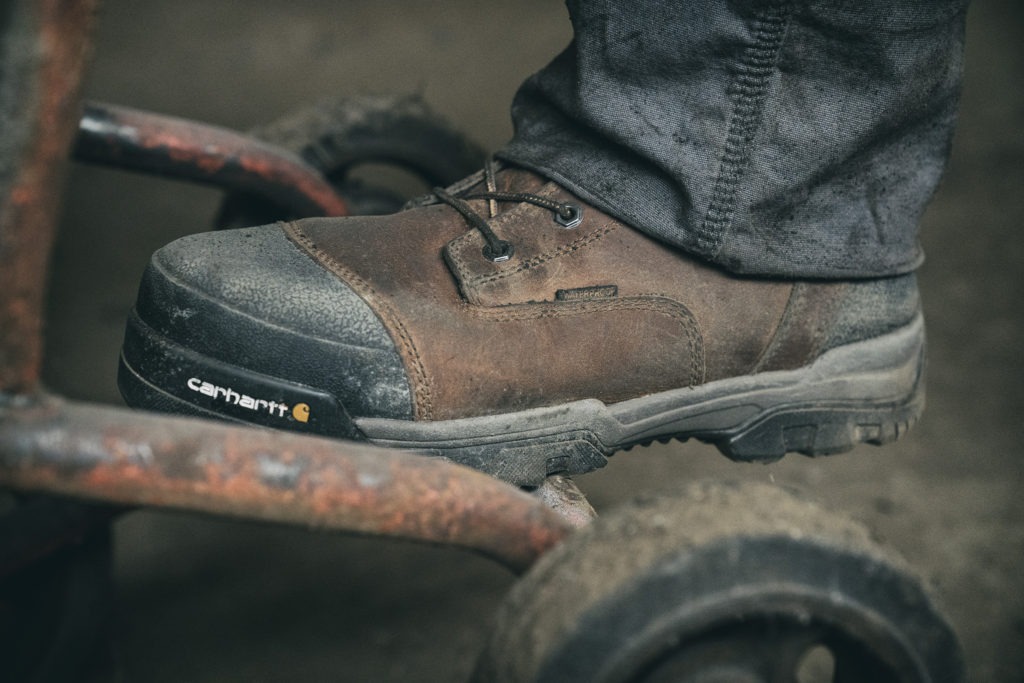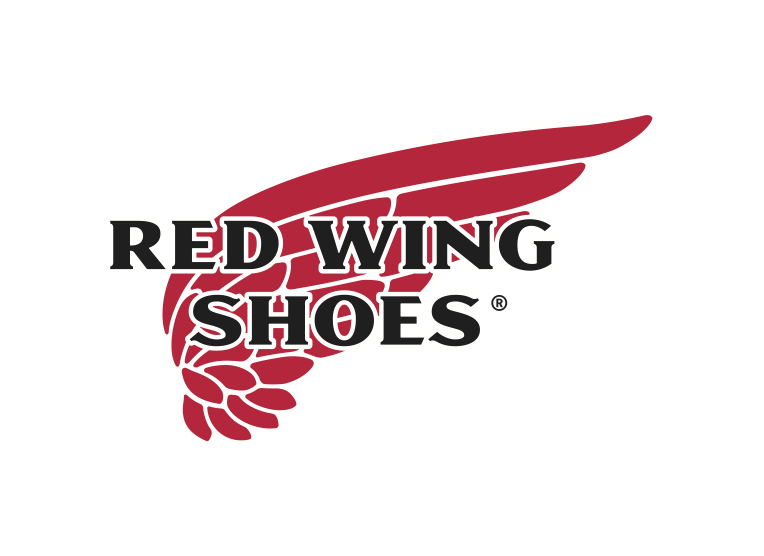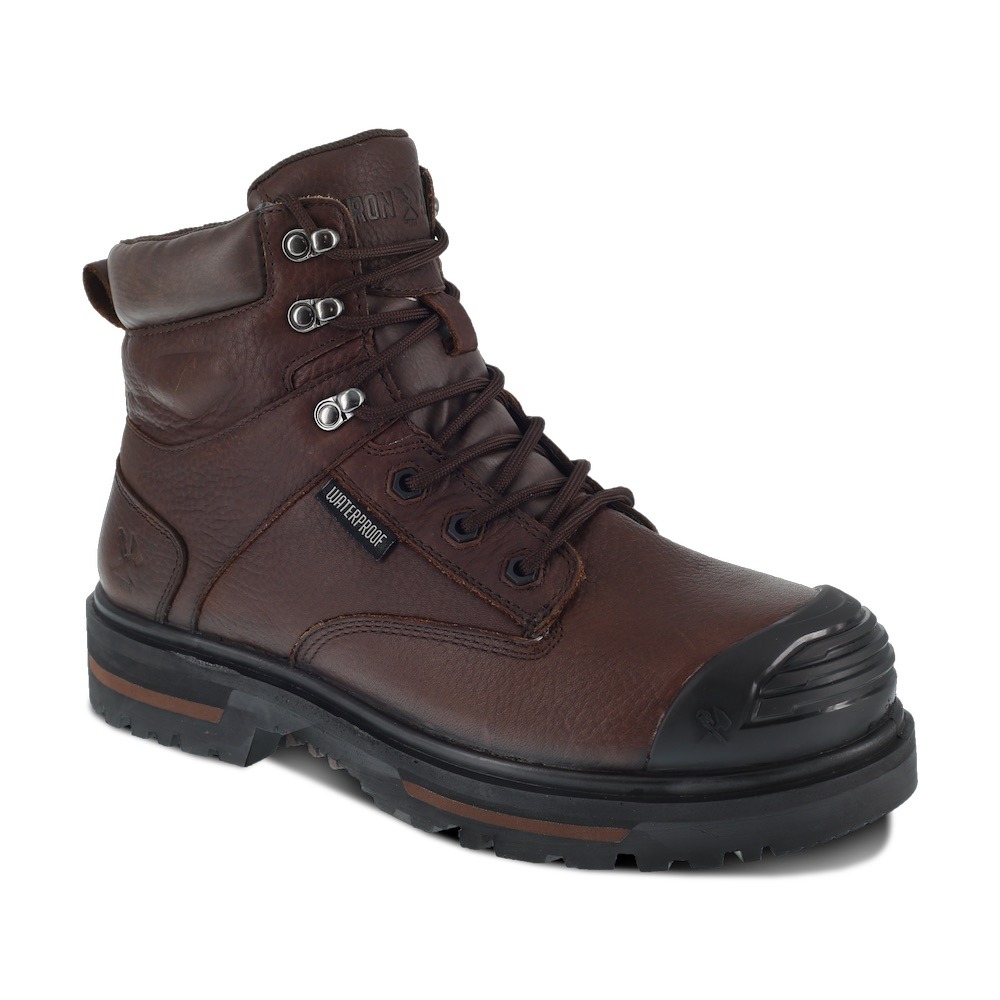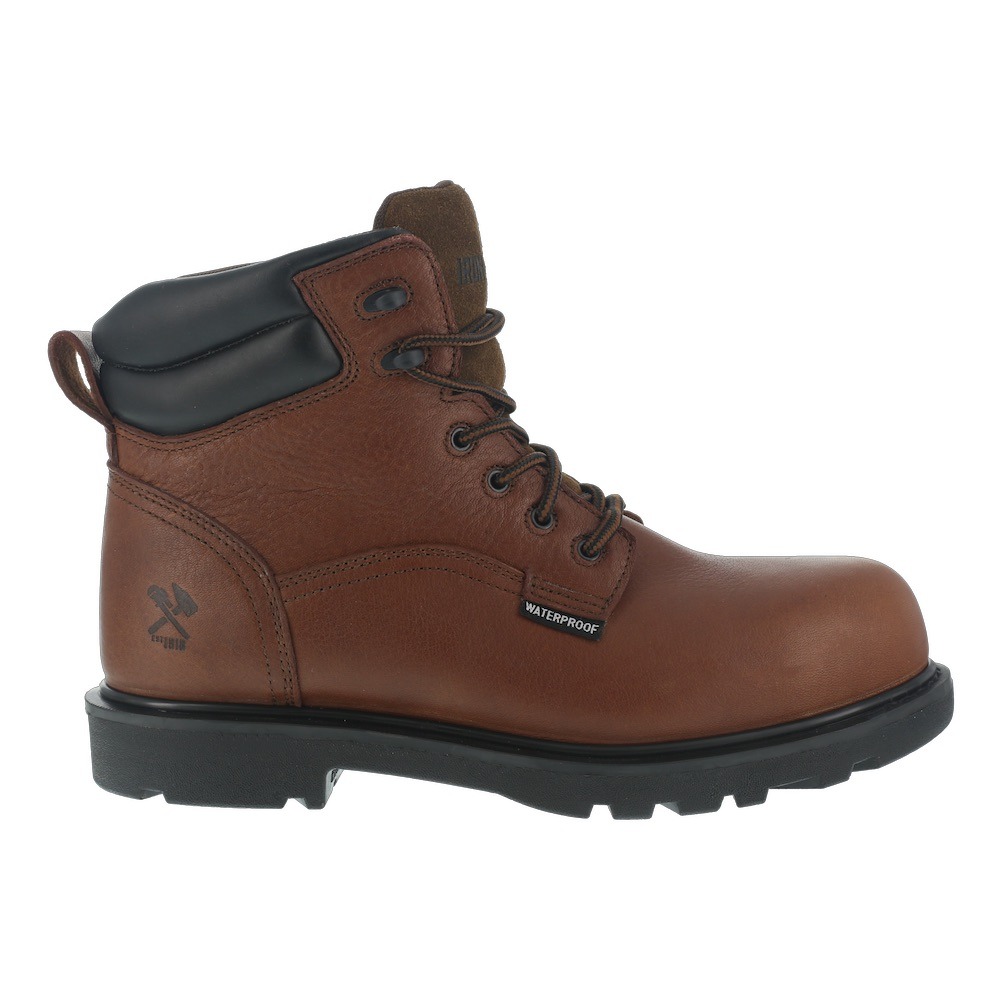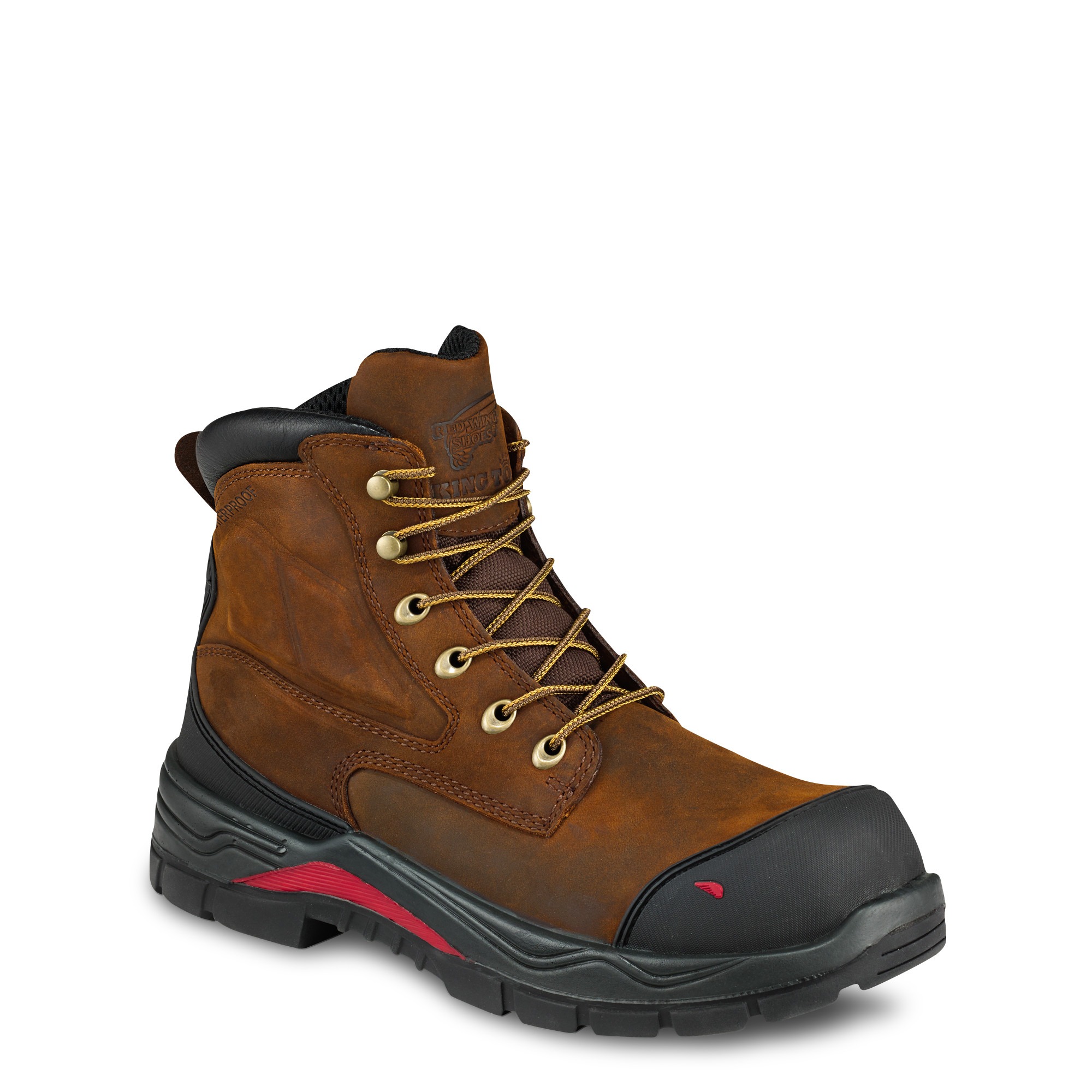The human foot is an amazingly bendable mechanism with 26 bones, 33 joints, 19 muscles and tendons and a whopping 107 ligaments — per foot. These 52 bones comprise around one quarter of all the bones in your body.
The average person takes approximately 18,000 steps each day, and some portion of the more than six million fractures, aka broken bones, annually are in the foot. There are three distinct stages to healing from a broken foot, none of which you want to experience:
- Injury and associated inflammation
- Surgery, wrap, special walking equipment and bone production
- Maturity and bone remodeling
The recovery runs around three to four months, not including physical therapy. Foot complications may cause lower back, knee and hip problems, along with not being able to walk to the fridge for a cold one whenever you want. Factor in that workman’s comp, if you even get it, comes in way below your normal wages. There’s measurable pain and suffering, boredom and frustration. Thus, protecting your feet on the job takes on new meaning.
The year 1905 was exciting for the Wright Brothers claiming to be the first to stay airborne more than 30 minutes (39 to be exact), and Las Vegas was founded on 100 acres, which had sold at auction. Among the harsh Minnesota industries of mining, farming and logging, a shoe merchant named Charles Beckman developed work boots that would be tough and comfortable. He named the company for his town of Red Wing, and “a new standard of excellence was born.” [www.redwingshoes.com]
“Having high-quality work boots is a must, especially given the physically demanding work conditions that require mason contractors to lift heavy material, stand, kneel and bend for long periods of time and often in poor weather conditions,” states Jeffrey Goodwin, Director of Industrial Business – North America, for Red Wing Shoe Company. “One notable product that suits these needs is the new King Toe ADC (All Day Comfort) work boot. This boot is built for the longest, toughest workdays, and surrounds feet with absolute durability, stability and performance. It contains memory foam in the ankle, heel, tongue and gusset to maximize all-day comfort. A nanocomposite toe cap provides superior protection with less weight and bulk and leverages an asymmetrical design to match the unique shape of the left and right foot with 44 percent more toe room than standard work boots.”
Iron Age was established in 1918 and just seven years later introduced steel toe technology into their work boots. “As America grew, so did we. Built for dirt, sweat and grit, our steel was found at worksites across the country. In a world of war, industry and danger, we thrived. Tough then, Tough now. The work hasn’t changed, so neither have we.” [www.ironagefootwear.com]
“One of the biggest things regarding feet is taking them for granted until something happens,” relates Brent Jennings, Brand Manager for Iron Age. “Some may not have an incident for years, but when it happens, it’s possibly something that results in permanent foot damage and could have easily been prevented with protective footwear. Stonemasons work around a lot of equipment and heavy raw materials, and foot protection is imperative. If you have protective footwear that has support and durability and has been engineered for movement, you’re going to get less tired, be more productive and exert less energy.”
Iron Age boots are made to protect your toes from impact and compression, as well as guard your foot with metatarsal [top of the foot bone] protective footwear. These include impact-absorbing protection for the top of the foot that goes all the way up to the tongue of your boot. “The materials are soft and flexible while wearing and harden upon impact,” Jennings continues. “It’s a chemical compound that can save the person wearing it from breaking a bone. A lot of time the toes are protected but not the top of the foot. Another safety hazard for feet in any occupational job is turning or rolling the ankles. We try to do a good job of providing solid ankle support and outsoles [the part you walk on] that can grip well.”
High-Tech Materials
Plastics, polymers, composites and nanoparticles have all stepped out of the laboratory and into the boot arena. Of course, leather may still play the largest role in design and manufacturing, but boot construction incorporates multiple materials to produce tough, comfortable footwear.
Iron Age has a new concrete product to be unveiled at the World of Concrete in January. “We’ve been developing a shoe called the Troweler which has a new thermoplastic toe guard dubbed the Shift Kicker. It’s our toughest toe guard ever made. It runs along the front of your foot like a toe bumper, because a lot of time people will kick or hold things up with their feet,” Jennings explains. “It is a very tough thermoplastic toe guard that can take a lot of abuse. We’re trying to increase the longevity of the boot and allow the construction worker to use it as a tool to do a lot more with the front of their foot.”
Of course, no good boot is made that does not involve high quality leather. Like skin, there are pores in leather that permit air circulation. Leather is pliable and will mimic the shape of an individual’s foot for optimizing comfort. It is strong and durable, natural and flexible. Even if you are not making a fashion statement on the job, leather is undeniably classy.
Red Wing owns its own leather company, S.B. Foot Tanning Company, which provides leather to the U.S. military as well. According to its website: “From WWI to Operation Iraqi Freedom, when a soldier laces up for duty, there is a very good chance he or she is putting on a boot made from S.B. Foot leather.” The nanocomposite safety toe technology incorporated in Red Wing’s King Toe ADC work boots is unique in that it provides ultimate protection despite being made of extremely thin, lightweight, non-metallic composite material.
Passing the Test
It’s challenging and somewhat unnecessary to create an artificial jobsite to test rugged wear boots when there are so many real sites around the country. Each one has some combination of uneven ground, oil or grease, mud, ice, wind, chemicals, equipment, rain, cords, moving machinery, heat, people and hazards of all kinds.
“We meticulously test our products to ensure they meet or exceed industry standards and conduct ongoing fit and wear test trials in actual working conditions,” explains Goodwin. “Three-layer Red Wing waterproof technology allows feet to stay cool and breathe while also staying dry. We audit our waterproof boots by flexing them 50,000 times in a waterproof tank to ensure they will outlast the wettest of conditions. After passing in-house testing, the work boots are sent into the field on the feet of some of our industrial accounts acting as product testers. They wear the boots in the toughest, dirtiest, hardest working situations, then report back. By wearing samples on the job, we can make changes before manufacturing begins.”
Where once there were all steel toes, Iron Age now markets composite toes, similar to something you’d have in a countertop. “They all pass the compression impact and crush standard and protect the toes while giving them clearance. We literally pound the shoes with a huge amount of force using a factory-type metal beam for our testing. The boot has to withstand this huge amount of force and give the foot clearance for someone to out of it if needed,” Jennings says.
Red Wing also uses a unique “toe tap test” in which boots are tested for performance at -40 degrees Fahrenheit. It may not be required, but this helps ensure the footwear performs if or when it is worn in extreme cold weather conditions.
Stepping Forward
“Perhaps the biggest trends right now are aesthetics and comfort. Big brands like Merrell, Timberland and Keen have brought a lot of money and expertise with their emphasis on style and comfort,” Jennings observes. “We’ve made our protective footwear much more comfortable. But if you are working in an environment where something can fall and break your foot, you should wear protective footwear. For someone mixing wet mortar, waterproof boots are the best, like our Hydrotex® waterproof system.”
Goodwin concurs on the design factor. “Younger workers expect premium technology, innovative materials and on-trend designs, so our materials scientists are looking for ways to combine the latest in form and function,” he says. “Safety has long been a trend, too. According to the Bureau of Labor Statistics, employment of masonry workers is projected to grow 15 percent between now and 2024. Masonry jobsites present demanding work conditions that necessitate safe, comfortable, durable footwear. We continue to explore new ways and innovative features that can keep skilled laborers safe and productive.”
SIDEBAR:
The American Podiatry Medical Association advises buying footwear in the afternoon. Your feet swell a little throughout the day, so mid-late afternoon is the most ideal time to try on shoes or boots. Many people have one foot larger than the other, and the bigger one should be fit with the person standing. The organization also reports that during an average day of walking, the total forces on your feet can total hundreds of tons –equivalent to an average fully-loaded cement truck.
